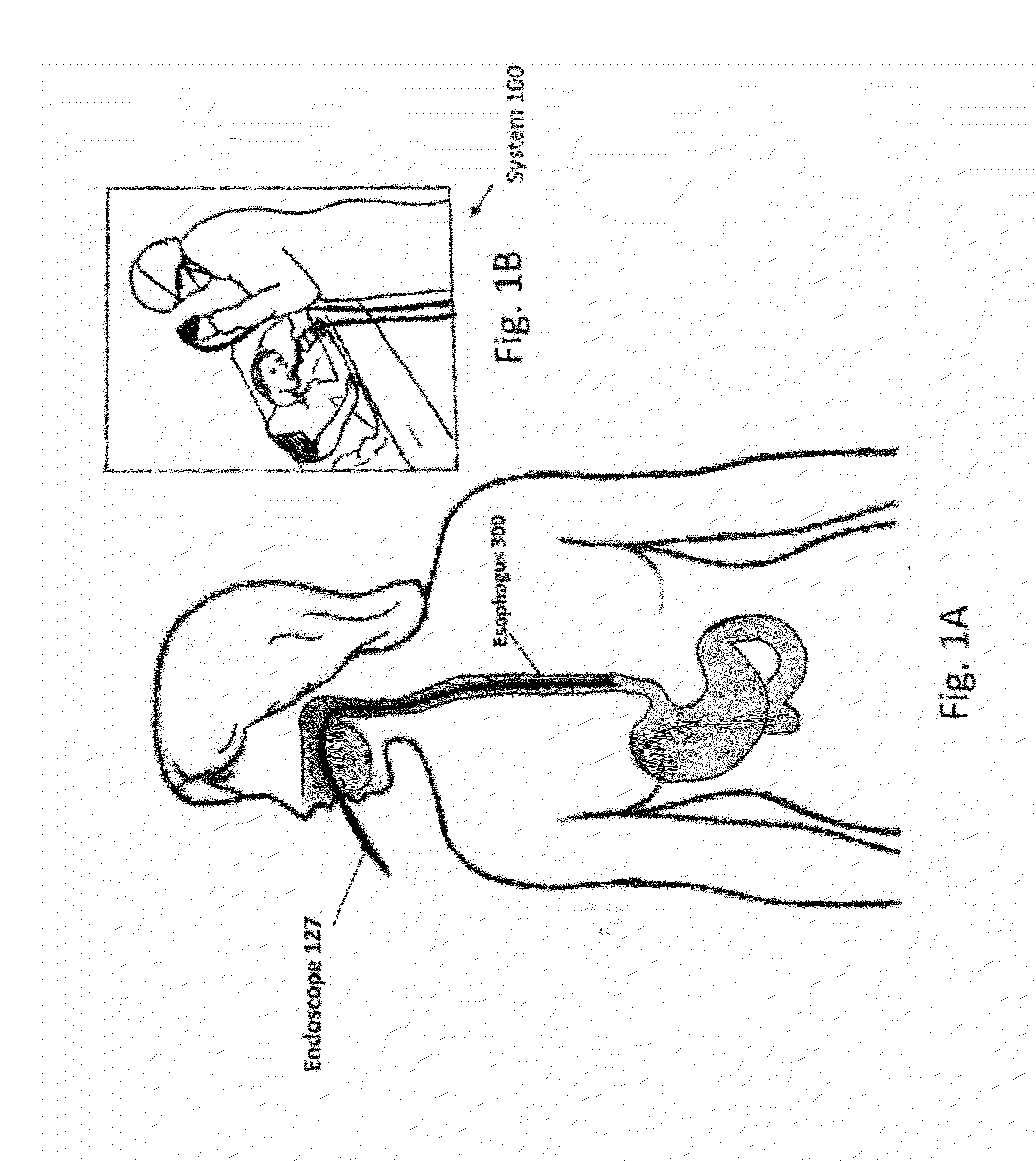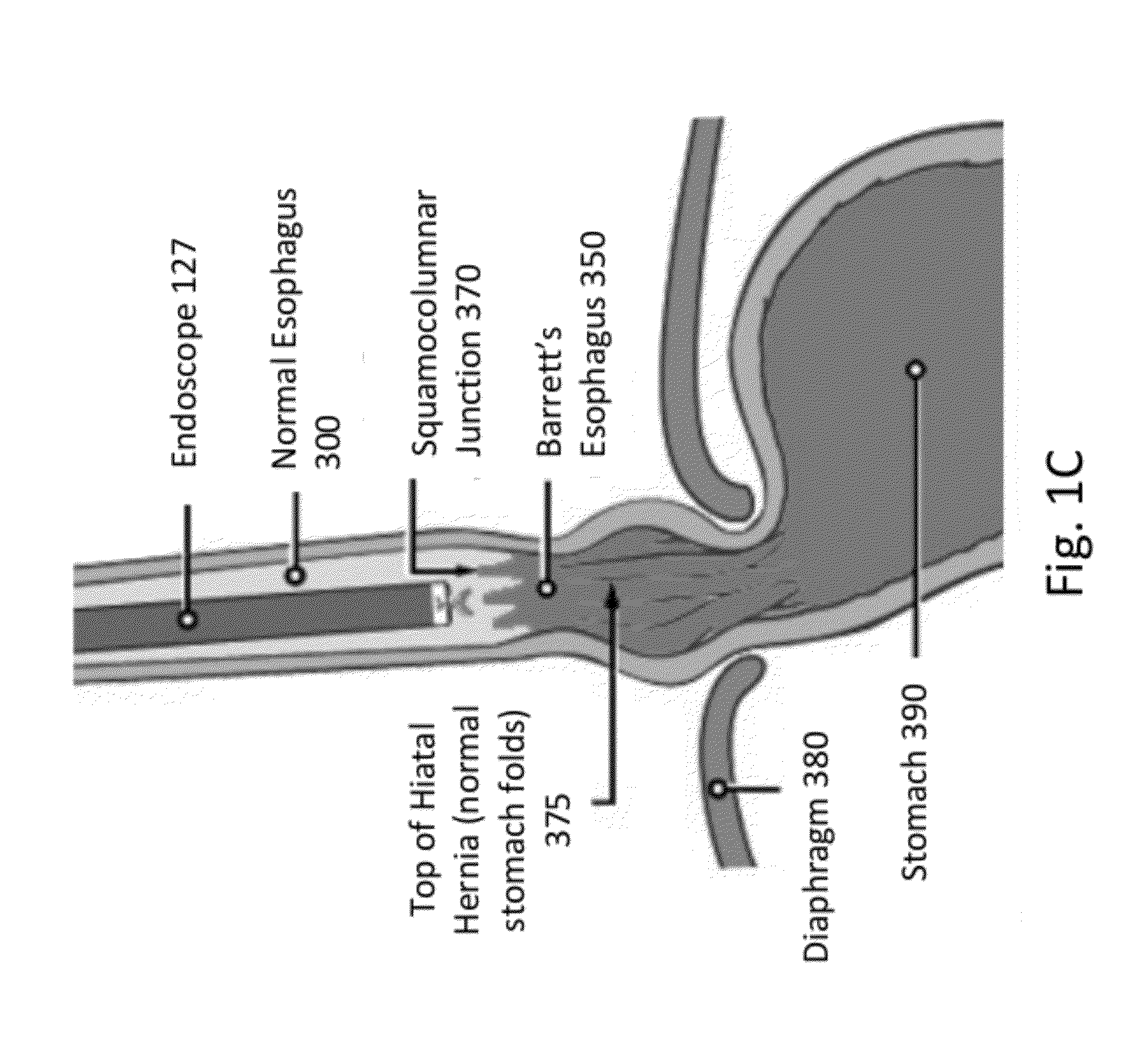Diode laser systems and methods for endoscopic treatment of tissue
- Summary
- Abstract
- Description
- Claims
- Application Information
AI Technical Summary
Benefits of technology
Problems solved by technology
Method used
Image
Examples
Embodiment Construction
[0026]Embodiments as described herein can exploit the absorption near absorption peaks of at least one type of molecule found within the human body, for example hemoglobin. As used herein, a tissue treatment region encompasses an ablation layer and a coagulation layer.
[0027]Embodiments of the present invention provide improved laser systems and methods for endoscopic laser treatment of abnormal tissue such as abnormal mucosal tissue, for example esophageal dysplasia that is also referred to as Barrett's Esophagus. The system and method described here can also be used in many applications where treatment of shallow surface layers with minimal damage to the tissue beneath is desirable, for example tissue comprising hemoglobin.
[0028]Barrett's esophagus (BE) is a disorder in which the lining of the esophagus, the tube which carries food from the throat to the stomach, is damaged. The normal squamous epithelium lining of the esophagus is replaced by metaplastic columnar epithelium, which...
PUM
 Login to View More
Login to View More Abstract
Description
Claims
Application Information
 Login to View More
Login to View More - R&D
- Intellectual Property
- Life Sciences
- Materials
- Tech Scout
- Unparalleled Data Quality
- Higher Quality Content
- 60% Fewer Hallucinations
Browse by: Latest US Patents, China's latest patents, Technical Efficacy Thesaurus, Application Domain, Technology Topic, Popular Technical Reports.
© 2025 PatSnap. All rights reserved.Legal|Privacy policy|Modern Slavery Act Transparency Statement|Sitemap|About US| Contact US: help@patsnap.com



